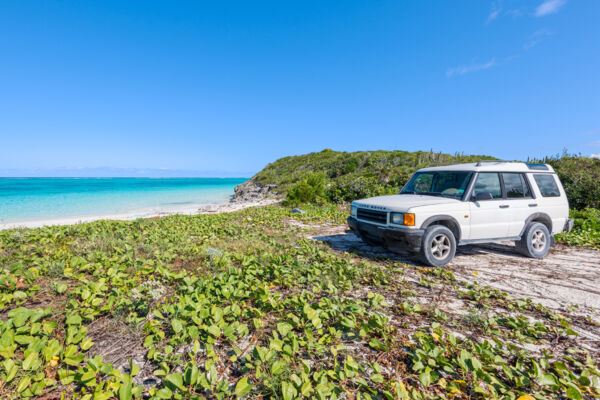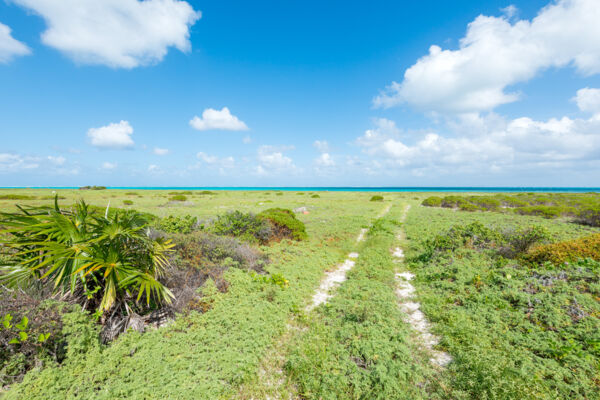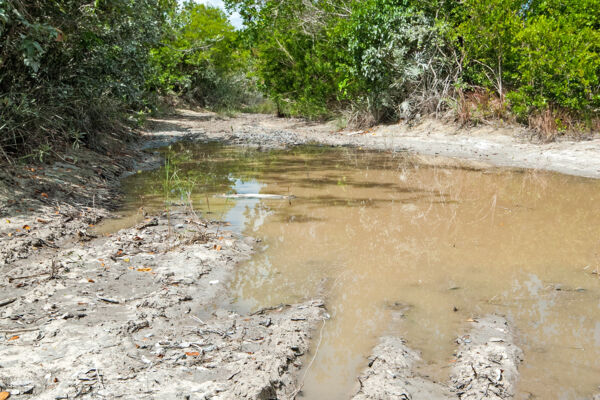North Caicos & Middle Caicos Off Road Driving Guide
Disclaimer: This article is for general informational purposes only and is not an endorsement of this activity. Off-road driving is not usually included in your car insurance and you will normally be liable for any damage that occurs on unpaved roads. Some areas mentioned here are remote and isolated. Please stay on established roads.
As the largest islands in the Turks and Caicos, North Caicos and Middle Caicos offer the best adventure driving in the Turks and Caicos.
Miles of outback roads lead through the wetlands, hills, and coastal regions, many of which lead to points of natural beauty.
As to be expected, road conditions vary greatly. There are no “technical” or serious off-road courses, but plenty of unpaved roads through beautiful Caribbean wilderness. In many cases, roads are rolled and graded limestone, and are generally decent. In other areas, vegetation has reclaimed much of the track or erosion has formed deep ruts and loosened rocks.
North Caicos and Middle Caicos are great places to explore and offer the all-too-rare combination of a relatively low crime risk, easy navigation, and very little true dangers.
Drinking water is one of the greatest concerns. The sun and heat are typically intense, so we highly recommend that each person in your party have at least one gallon (4 liters) of water per person per day.
If your vehicle does break down, the longest walk back to a settlement should be no greater than about 7 miles or 11 kilometers (from the remote beach of Cedar Point to the village of Lorimers).
The road and settlements of North and Middle Caicos are quite linear, so it’s quite difficult to actually get lost. However, we do highly recommend that you have a map. Maps may be included with rentals, but to be sure, consider printing our North Caicos and Middle Caicos maps.
We recommend having a working cell phone. Reception can be had throughout both islands, but signal quality can be poor in some areas of Middle Caicos (you won’t get a 3G or higher data signal). For more information, see Telephones, Internet, and Mobile Phones.
Vehicles
Rental vehicles on North Caicos and Middle Caicos tend to be older and a bit more run-down than their counterparts on Providenciales. The truth is that nearly all interesting sites on both islands can be visited by the typical economy compact car, but having a jeep or SUV does make the experience a bit more fun, and brings extra peace of mind.
The best 4x4s available are either the Jeep Wrangler or Land Rover Discovery.
Some of the vehicles consume more fuel than you’d expect, and there aren't any fuel stations on Middle Caicos. We recommend stopping at either the Texaco station on King’s Road or the Core Petroleum station in Bottle Creek to fill up before you continue your journey onto Middle Caicos.
Routes
Here are some of the longer routes on the islands.
Haulover and Cedar Point
Found on the isolated east side of Middle Caicos, this long and scenic drive leads to many points of interest. You’ll pass Haulover Plantation, the expansive Haulover Salina, the cliffs and coves of Haulover Point, Wild Cow Run, and the spectacular Cedar Point.
Although unpaved, the road here is generally in good condition and suitable for any vehicle. There’s no actual “off-road” driving.
Conch Bar Coastal Trail
This really beautiful (and rather short) Middle Caicos trail leads along the top of the coastal bluff between Conch Bar and Nongatown Landing. You can expect great ocean views, sisal plants, and secluded beaches.
Due to tire ruts forming over time in the sandy soil, a vehicle (such as any common 4x4 or jeep) with higher clearance than the average small car will be required. This road is one lane only (in the unlikely case of oncoming traffic, simply find an opening to pass) and the vegetation can be restrictive in places.
Old King’s Road
This old road on Middle Caicos used to connect the tiny settlement of Lorimers to the rest of the island. Today, a portion of this track between the entrance to Conch Bar Caves and Bambarra has been abandoned in favor of a new paved road and is now overgrown and rough.
There actually isn’t much to see here other than the Caicos Pine Yard Trail, saline tundra vegetation, and the rather unimpressive Washing Pond blue hole.
A capable 4x4 is highly recommended for this route, and vegetation growth can be high.
Mud Hole Pond Trail
On North Caicos, this road follows the banks of Mud Hole Pond (more scenic than the name suggests) between Sandy Point Road and the Three Marys Cays area.
We recommend avoiding this track if heavy rains have occurred recently. It’s best to have a proper 4x4 for this route.
Guidelines and Regulations
- Stay on the roads! Do not attempt to drive on any salina, dried pond, or wetlands. Doing so results in long-lasting damage to the delicate and limited environment. If that isn’t reason enough, such flats are treacherous, with a deceptively stable top layer of hyper-saline mud over water.
- Do not drive on any beach. Along with being illegal, you will very likely get your vehicle stuck.
- Do not attempt to travel on any road conditions that exceed the limits of your vehicle or driving skills.
- Be wary of any water in the road. Potholes and puddles can be deep or have soft bottoms and hidden hazards.
- If you get stuck in the soft sand of one of the roads, do not keep spinning the wheels. Continuing to simply spin the tires results in the vehicles sinking farther into the ground.
- Rental companies have different policies on off-road driving. Due to the number of unpaved roads on both islands, companies at this time do not prohibit driving on unpaved and poor roads, but they will likely hold the renter financially responsible for any damage that occurs.
- The most common issue that occurs on poor roads is damage caused by rock and vegetation strikes to brake lines, belts, tires, and electronics.



